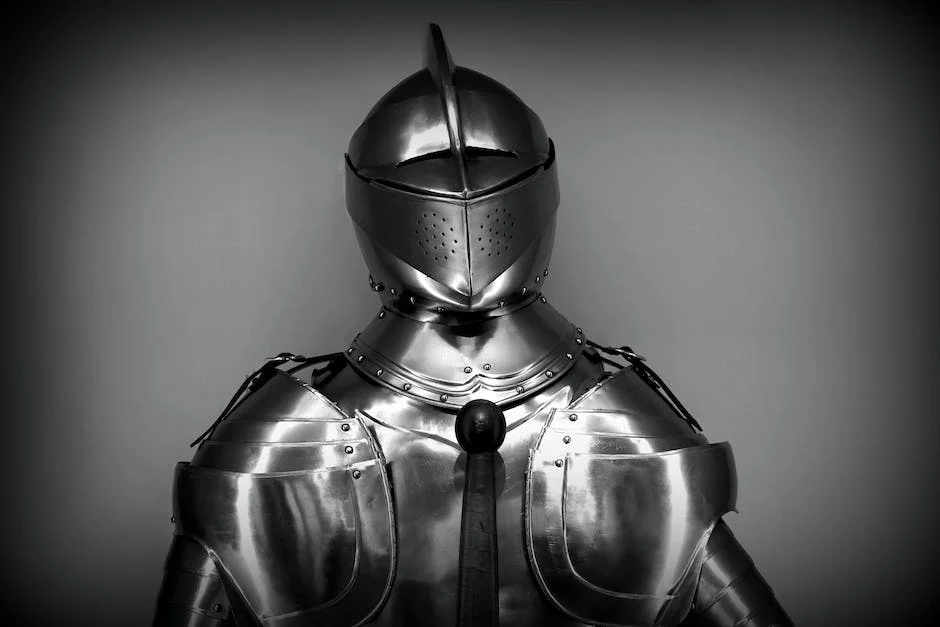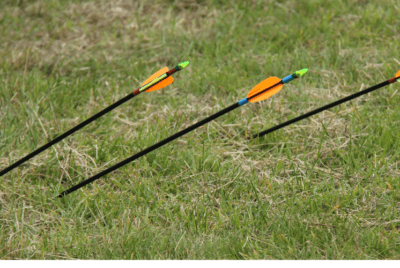The Evolution of Archery Through History
A Brief Introduction to Archery
Archery, one of the oldest arts still practiced today, has evolved significantly over the centuries. Originating over 10,000 years ago, it was initially used for hunting and warfare. As civilizations advanced, so did the techniques and equipment used in archery, transforming it into a competitive sport and recreational activity. Archery’s evolution is a fascinating journey from simple bows and arrows in the Stone Age to the highly sophisticated equipment used in today’s sport. This blog will take you through this intriguing history, highlighting the major changes and advancements in archery.

Archery in Ancient Times
Archery’s roots trace back to ancient times, making it one of the oldest arts still practiced today. Early civilizations, like the Egyptians and Persians, used archery primarily for hunting and warfare. Bows and arrows varied in design and materials based on the region and available resources. For example, Egyptians used composite bows made from animal horn, wood, and sinew. These ancient archers played a vital role in shaping history, with their skill often deciding the outcome of battles. The evolution of archery during these ancient times laid the foundation for its role in modern sports and hunting.
The Role of Archery in Medieval Warfare
In the era of medieval warfare, archery played a significant role as a powerful and strategic weapon. Bows and arrows were not just tools for hunting, but they were also instrumental in battles. Soldiers, known as archers, were specially trained to use these weapons with precision. The English Longbow, for example, was a game-changer in many battles due to its long-range and high accuracy. Archery allowed armies to engage enemies from a distance, providing a tactical advantage. Over time, advancements in technology and tactics continued to shape the role of archery in warfare, marking its significant contribution to medieval battle strategies.
Archery During the Renaissance Period
During the Renaissance period, archery underwent significant changes. This was a time of great exploration and discovery, and this was reflected in the advances made in archery. The bow and arrow, once primarily used for hunting and warfare, started to become more popular as a recreational activity among the upper class. Moreover, the crossbow, a powerful and accurate weapon, gained prominence during this time. However, as gunpowder became more widely used, the role of archery in warfare began to diminish. Despite this, the Renaissance period still contributed greatly to the evolution of archery, with innovations in bow design and the rise of recreational use.

The Evolution of Archery in Asia
The evolution of archery in Asia is a fascinating journey that reflects the region’s rich history and diverse cultures. From its earliest origins in the Stone Age to its use in warfare and hunting, archery has been an integral part of Asian societies. The bow and arrow were not only tools for survival, but also symbols of power and skill. In Japan, the practice of Kyudo turned archery into a spiritual discipline, while in Mongolia, it evolved into a popular sport. Today, the legacy of this ancient tradition continues to thrive in Asia, influencing modern sports and martial arts.
Archery in the New World: Native American Traditions
Native American tribes have a rich history of archery, using it for hunting, warfare, and recreational activities. Each tribe developed unique bow and arrow designs, reflecting their culture, environment, and needs. For instance, the Plains Indians crafted flat bows for horseback hunting, while the Inuit designed asymmetrical bows to hunt in snowy conditions. These traditions not only display the ingenuity of Native American tribes but also the fundamental role of archery in their survival and way of life. Today, these valued traditions continue to influence modern archery techniques and equipment.

Archery in the Modern Olympic Games
Archery has been a part of the Modern Olympic Games since 1900. It was, however, excluded from the games between 1920 to 1972 due to a lack of consistent international rules. With the establishment of the International Archery Federation (FITA) in 1931, archery found its way back into the Olympics in 1972. Today, it’s a vibrant part of the competition, with events available for both men and women. The sport has evolved over the years, with the introduction of compound bows and advanced scoring systems, making it a thrilling spectacle that combines a rich history with modern technology.
Technological Advancements in Archery Equipment
From the rudimentary wooden bows used by early humans to the modern high-tech compound bows, archery equipment has come a long way. Technological advancements in archery have not only improved the accuracy and power of bows, but also made them more user-friendly. For instance, the invention of the recurve bow, with its unique curves at the ends, increased the speed of the arrow significantly. Later, the compound bow revolutionized archery by employing a system of cables and pulleys to make drawing the bow easier, while also enhancing the power and accuracy. Today, the use of modern materials like carbon fiber and advanced designs have further enhanced the performance of archery equipment. These technological leaps have made archery a more accessible and enjoyable sport for everyone.
Modern Archery: Hobby, Sport, and Hunting
Modern Archery has evolved to become more than just a method of warfare or hunting. Today, it is appreciated and practiced as a hobby, a competitive sport, and a method of hunting. As a hobby, it allows individuals to develop focus, patience, and precision. In the sporting world, archery is recognized globally with competitions including the Olympics and World Archery Championships. Hunting with a bow, while less common than in the past, remains a challenging and rewarding pursuit for many. Modern advancements in equipment such as compound bows and carbon fiber arrows have increased the accuracy and efficiency of archery, making it more accessible and enjoyable for everyone.
Archery in Popular Culture
Archery’s influence extends far beyond its range. It has integrated itself into popular culture, making a lasting impact in literature, film, and art. Legendary figures such as Robin Hood and Legolas have become synonymous with exceptional archery skills. Their accuracy and mastery of the bow have captivated audiences worldwide. Furthermore, archery plays a prominent role in epic narratives like the Battle of Agincourt, immortalized in Shakespeare’s Henry V. In contemporary times, blockbuster franchises like “The Hunger Games” and “The Lord of the Rings” have further propelled archery into the spotlight, inspiring a new generation of archers. This cultural resonance demonstrates the enduring allure and importance of archery in our collective imagination.

Archery as a Therapeutic Practice
In addition to its competitive and recreational aspects, archery has been increasingly utilized in therapeutic settings. The practice of archery offers a distinctive combination of physical and mental exercise, fostering focus, patience, and mindfulness. The repetitive action of drawing the bowstring and the precise release of the arrow provide solace for many individuals. As a result, archery has been integrated into various therapeutic programs, particularly for individuals facing anxiety, PTSD, and other mental health challenges. The deliberate and controlled movements required in archery demonstrate their potential as a powerful tool for enhancing emotional well-being and self-confidence. Consequently, archery serves as a testament to the diversified benefits that sports and physical activities can offer individuals seeking both physical and emotional wellness.
The Future of Archery: Trends and Predictions
In recent years, archery has evolved from its original purposes of hunting and warfare into a highly popular recreational activity and competitive sport. The future of archery shows great promise, with clear trends and forecasts gaining momentum. Technological advancements are set to revolutionize archery equipment, improving accuracy, efficiency, and user experience. Anticipated developments in Virtual Reality (VR) and Augmented Reality (AR) technologies are expected to expand the reach of archery, providing immersive experiences for a wider range of people. Furthermore, there is a growing interest in traditional archery, suggesting a potential revival of ancient techniques. Without a doubt, this is an exciting time for both experienced archers and newcomers entering the sport.
Conclusion
The history of archery is a rich tapestry that weaves together ancient tradition, technological innovation, and cultural significance. What once began as a tool for survival has now transformed into a global phenomenon, encompassing a wide range of activities such as sports, recreation, and therapeutic practice. Through technological advancements, archery has become more accessible to a larger audience in the modern era. Additionally, its presence in popular culture continues to inspire and captivate individuals worldwide. Furthermore, the therapeutic benefits of archery highlight its potential to enhance both physical and mental well-being. Looking towards the future, archery promises to bring forth even more exciting developments, as technology and tradition converge to shape a new chapter in this ancient art form. Whether one seeks precision on the range or solace in the draw of a bowstring, archery remains a timeless and enriching pursuit.
FAQs (Frequently Asked Questions)
- What are the origins of archery?
Archery’s origins date back over 10,000 years, initially used for hunting and warfare by ancient civilizations like the Egyptians and Persians. It has since evolved into a global sport and recreational activity.
- How has technology influenced modern archery equipment?
Technological advancements have revolutionized archery equipment, from the recurve bow to the compound bow. Materials like carbon fiber and innovative designs have greatly improved accuracy and efficiency.
- What role does archery play in contemporary sports?
Archery is a prominent sport globally, featuring in prestigious events such as the Olympics and World Archery Championships. It attracts participants of all ages and skill levels, making it a vibrant and inclusive sporting community.
- Are there any emerging trends in archery?
The future of archery is marked by exciting trends. Expect advancements in equipment, including more accurate and user-friendly bows. Additionally, the integration of Virtual Reality (VR) and Augmented Reality (AR) technologies is set to provide immersive archery experiences.
- How can beginners get started in archery?
Beginners can begin their archery journey by seeking out local archery clubs or facilities. Joining introductory classes or working with certified instructors can provide the necessary foundation in safety, technique, and equipment handling. It’s crucial to start with proper training to ensure a safe and enjoyable experience.




